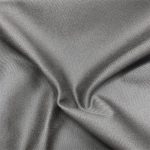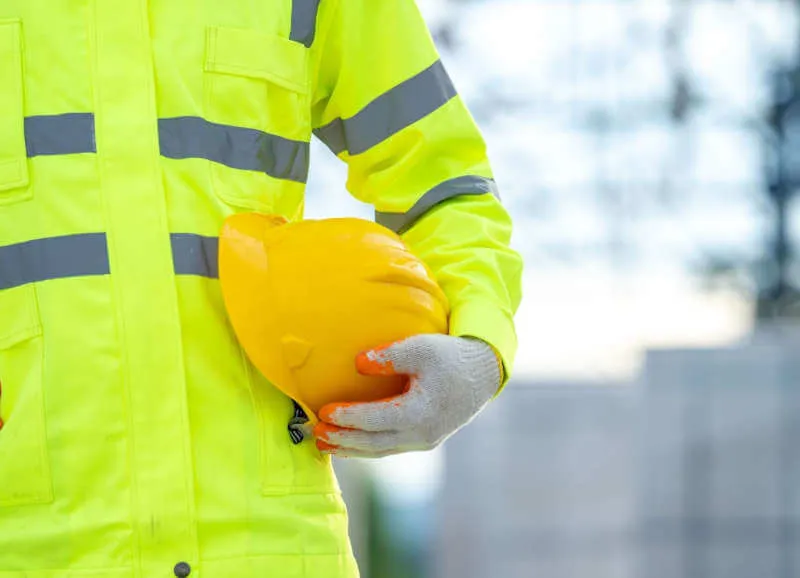Choosing the right fabric for construction and safety apparel is essential for the safety, comfort, and productivity of your workers. In industries like construction, where workers face various hazards and demanding environments, the fabric you choose can make a big difference. In this article, I’ll walk you through the key factors to consider when selecting the right fabric for construction and safety apparel. This will help you make informed decisions to protect your workforce.
Key Characteristics of Suitable Fabrics
1) Durability
Significance: Workwear needs to be able to handle the rigors of construction sites, including abrasion, rough surfaces, and frequent use.
Ideal Fabrics: Heavy-duty cotton drill, polyester blends.
Advantages: These fabrics are super strong and will last longer in tough conditions.
2) Abrasion Resistance
Significance: Protects workers from cuts, scrapes, and punctures that are common in construction environments.
Ideal Fabrics: Kevlar, Cordura.
Advantages: Kevlar is super strong, and Cordura is known for its durability and resistance to wear and tear.
3) Flame Resistance
Significance: Essential for workers exposed to fire hazards, reducing the risk of burns and injuries.
Ideal Fabrics: Nomex, treated cotton.
Advantages: Nomex is inherently flame-resistant, and treated cotton is treated with chemicals to make it flame-resistant.
4) Chemical Resistance
Significance: Important for workers who handle hazardous substances, protecting them from chemical spills and splashes.
Ideal Fabrics: Teflon-coated fabrics, chemically treated fabrics.
Advantages: Teflon coatings repel liquids and chemicals, providing a barrier against harmful substances.
5) High-Visibility
Significance: Improves worker visibility in low-light conditions or around heavy machinery, reducing the risk of accidents.
Ideal Fabrics: Neon-colored fabrics with reflective strips.
Advantages: High-visibility fabrics make workers more visible, improving overall site safety.
6) Comfort and Breathability
Significance: Ensures workers are comfortable, preventing overheating and discomfort that can affect productivity.
Ideal Fabrics: Cotton blends, moisture-wicking fabrics.
Advantages: These fabrics are comfortable because they allow air circulation and moisture management, which improves worker performance.
Types of Fabrics for Construction and Safety Workwear
1) Cotton and cotton blends
Benefits: Breathable, comfortable, good for hot climates
Applications: Construction, outdoor work
Examples: Heavy-duty cotton drill, cotton/polyester blends
2) Polyester and polyester blends
Benefits: Durable, wick moisture, resist wear and tear
Applications: High-activity environments, areas requiring frequent movement
Examples: Polyester/cotton blends, polyester/spandex blends
3) Kevlar
Benefits: Strong, resistant to cuts and abrasions
Applications: High-risk areas with potential for cuts and punctures, heavy machinery operation
Examples: Kevlar-reinforced fabrics, Kevlar/cotton blends
4) Nomex
Benefits: Flame-resistant, durable
Applications: Firefighting, welding, oil and gas industries
Examples: Nomex IIIA, Nomex/cotton blends
5) Cordura
Benefits: Durable, resistant to abrasions
Applications: High-wear areas, heavy-duty work environments
Examples: Cordura nylon, Cordura/polyester blends
6) Teflon-coated fabrics
Benefits: Chemical resistance, easy to clean
Applications: Chemical handling, environments prone to spills
Examples: Teflon-coated cotton, Teflon-coated polyester
7) High-visibility fabrics
Benefits: Enhance visibility, improve safety in low-light conditions
Applications: Road construction, night work, areas with heavy machinery
Examples: Neon yellow, neon orange with reflective strips
Compliance with Safety Standards
1) OSHA (Occupational Safety and Health Administration)
Importance: Ensure workwear meets safety requirements, protect workers from workplace hazards
Example: OSHA guidelines mandate the use of protective clothing to minimize exposure to hazards
2) NFPA (National Fire Protection Association)
Importance: Set standards for flame-resistant clothing, important for industries with fire hazards
Example: NFPA 2112 outlines the standard for flame-resistant garments used in industrial settings
3) ANSI (American National Standards Institute)
Importance: Establish standards for high-visibility clothing, ensure worker visibility in hazardous environments
Example: ANSI/ISEA 107 specifies requirements for high-visibility safety apparel
Case Studies: Real-World Benefits
Case Study 1: Construction Industry
Leading construction company implemented workwear made from heavy-duty cotton drill with reinforced stitching. Resulted in 30% reduction in workplace injuries related to cuts and abrasions within a year. Workers reported increased comfort and mobility, leading to higher productivity and morale.
Case Study 2: Oil and Gas Industry
Oil and gas company switched to flame-resistant workwear made from Nomex for field workers. Significantly decreased burn injuries. In one instance, a worker’s clothing self-extinguished during a flash fire, preventing severe injuries and demonstrating the company’s commitment to safety.
Case Study 3: Chemical Processing Industry
Chemical processing plant adopted workwear made from Teflon-coated fabrics. Resulted in 25% reduction in chemical burn incidents. Workers felt more secure, knowing their clothing provided an effective barrier against spills, leading to better focus and adherence to safety protocols.
Conclusion
Choosing the right fabric for construction and safety apparel is essential for protecting workers from the many hazards they face on a daily basis. Durable, abrasion-resistant, flame-resistant, chemical-resistant, and high-visibility fabrics are all important for ensuring worker safety and productivity. At Hubei Jiezhixin Textiles, we specialize in manufacturing high-quality, durable industrial workwear fabrics designed to meet the demanding needs of the construction industry. Our commitment to safety and quality ensures that your workforce is protected in even the harshest working conditions.

 100% COTTON FABRIC
100% COTTON FABRIC COTTON STRETCH FABRIC
COTTON STRETCH FABRIC POLYESTER/COTTON FABRIC
POLYESTER/COTTON FABRIC OTHERS FABRIC
OTHERS FABRIC